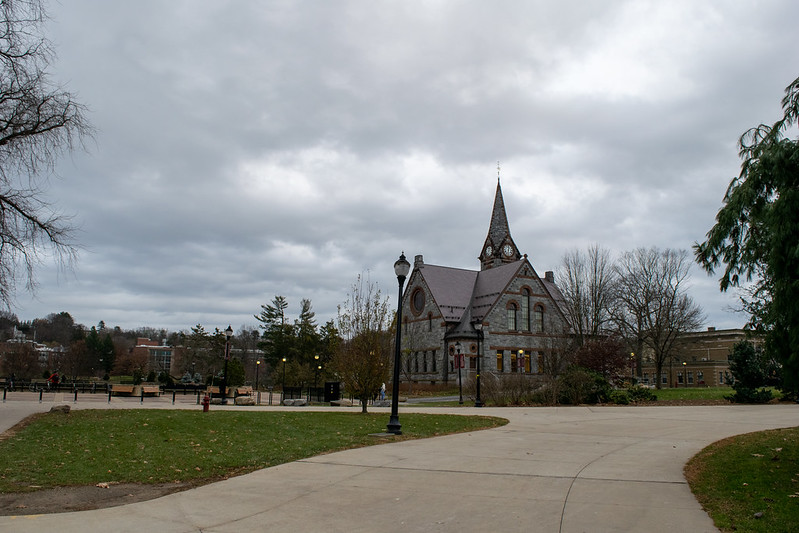On Wednesday, March 1, Stephen Clingman, a distinguished professor of English at the University of Massachusetts, guided students, faculty and community members through the work of South African artist William Kentridge.
At the Old Chapel, Clingman shared excerpts of his catalog-turned-book and screenings of two short films by Kentridge, providing history and context behind the artists’ creations.
Clingman wrote the catalog for Kentridge’s fall 2022 exhibit at Royal Academy of Arts in London.
Kentridge is known for his skill with charcoal drawing and his unique animation style, but over the course of his 40-year career, he has experimented with a range of media and genres, from collages to tapestry and theater.
Clingman and Kentridge attended the University of Witwatersrand in Johannesburg, South Africa. The two became friends, taking classes together and participating in anti-apartheid marches during their undergraduate years.
Clingman referenced their shared background that equipped him to write the catalog of Kentridge’s work, “We’d grown up in the same city, at the same time, in the same environment,” Clingman said.
Kentridge was born and raised in Johannesburg during the time of apartheid and the social-political movement to end the segregation, which is reflected through his art.
“One culture’s triumphs is built on another’s laments. That is very much indicative of how [Kentridge] sees the political world,” Clingman said.
Clingman acknowledged that he does not have professional experience with art critique, but throughout the event, his insight was critical to understanding the recurring characters, humor and imagery woven throughout the artist’s work.
“[There] is a playful aspect of Kentridge, which is endlessly regenerative,” Clingman said. “It draws on the energy of South Africa. Every time I go there, I feel that energy.”
Kentridge’s love of charcoal comes from the nebulous nature of the medium, how it has no fine point and how its broad strokes “edge white into black,” according to Clingman.
From his long-term relationship with Kentridge and time spent visiting the artist in his studio, Clingman came to understand Kentridge’s artistic process: he lets the drawings take their own path.
“He is willing to be led by the line, wherever it goes. That’s where [his works’] generative power comes from,” Clingman said.
Greta Jarvi, a senior majoring in studio arts, was familiar with Kentridge’s work through her class readings. “How the paper collects the energy and then you see it taken way … Reminds us of the passing of time, [it’s] really powerful.”
“[Kentridge] builds movement into everything,” Clingman said. “Theater flows into sculpture; drawing flows into film.”
The exploration of motion, change and time were best exemplified in the animated films by Kentridge, two of which were shown during the event. The films, “Waiting for the Sibyl” and “City Deep,” were created in 2020 but echo his original project, “Drawings for Projections.”
In his animations, Kentridge erases, redraws and retouches a single drawing. He photographs the entire process to create a sense of movement, adding rhythmic sound and music and transforming it into an audio-visual experience.
Adlyn Loewenthal, a resident of West Hartford, Conn., has been a longtime admirer of the artist. “It’s all in that charcoal. It creates that sort of vague but potent [feeling]. There is something beautiful in that combination.”
“It’s just very provocative, I love that there’s all these words and images and you’re sitting here trying to see what is the story [and] what is the narrative,” Loewenthal said. “At a certain point you let it go and let it wash over you, which is what I think [Kentridge] intended.”
Clingman helped demystify and contextualize the films’ imagery by sharing his own viewing experience. Explaining the meaning of a reoccurring character, he noted, “I resonate with that — not being able to release your complicity to the world around you.”
Grace Fiori can be reached at [email protected] and followed on Twitter, @grace_fiori.




















